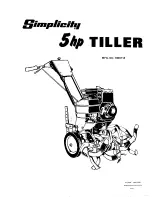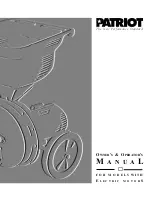
•
X= minutes/day of purge pump out operation
•
Y= initial refrigerant charge
A graph has been developed to aid in determining when
to do a leak check of a chiller based on the purge pump
out time and unit size. This graph depicts normal purge
pump out times, small leaks and large leaks based on
the chiller tonnage. If the purge pump out time is in the
small leak region, then a leak check should be performed
and all leaks repaired at the earliest convenience. If the
purge pump out time is in the large leak region, a thor-
ough leak check of the unit should be performed imme-
diately to find and fix the leaks.
Chiller tons (per circuit)
Purge minutes/da
y
large leak
small leaks
typical operation
Long Term Unit Storage
This section describes extended storage requirements
for chillers to be removed from service in excess of a
normal seasonal shutdown.
D
WARNING
Contains Refrigerant!
System contains oil and refrigerant and may be un-
der positive pressure. Recover refrigerant to relieve
pressure before opening the system. See unit name-
plate for refrigerant type. Do not use non-approved
refrigerants, refrigerant substitutes, or refrigerant
additives. Failure to follow proper procedures or the
use of non-approved refrigerants, refrigerant substi-
tutes, or refrigerant additives could result in death or
serious injury or equipment damage.
D
NOTICE
Freezing Tubes Hazard!
Ensure that water is not present in tubes during
evacuation. Failure to follow this instruction could
result in freezing tubes, damaging the chiller.
Unit Preparation
The following steps are necessary in order to properly
prepare a unit for storage.
1. Remove all liquid refrigerant if the unit is charged.
2. After the liquid refrigerant is removed, using a recov-
ery or recycle unit or vacuum pump, pull a vacuum
to remove remaining refrigerant vapor from the unit.
3. After all traces of refrigerant are out of the unit, a
positive nitrogen charge should be put into the unit
(6 to 8 psig). This positive pressure must be checked
monthly to ensure that no noncondensables get into
the unit. Use a pressure gage on the evaporator shell
to verify that the 6 to 8 psig dry nitrogen holding
charge is still in the chiller. If this charge has escaped,
contact a qualified service organization and the Trane
sales engineer that handled the order.
4. The refrigerant charge should be stored in proper
refrigerant containers. Due to possible leakage, do
not store in used drums.
5. Maintain control power to the control panel. This
will maintain oil temperature in the oil sump and the
capability of the control panel to present report infor-
mation. The Chiller Reports should be viewed once a
week for normal readings. Any abnormal observation
must be reported to the Trane Sales Engineer that
handled the order.
D
WARNING
Hazardous Voltage w/Capacitors!
Disconnect all electric power, including remote
disconnects before servicing. Follow proper lock-
out/ tagout procedures to ensure the power cannot
be inadvertently energized. For variable frequency
drives or other energy storing components provided
by Trane or others, refer to the appropriate manu-
facturer’s literature for allowable waiting periods for
discharge of capacitors. Verify with an appropriate
voltmeter that all capacitors have discharged. Failure
to disconnect power and discharge capacitors before
servicing could result in death or serious injury.
Note: For additional information regarding the safe
discharge of capacitors, see PROD-SVB06A-EN or
PROD-SVB06A-FR.
6. Remove the factory installed jumper or the field in-
stalled wiring on terminals in the unit control panel.
This will prevent unwanted chiller operation.
7. Set the purge operating mode to OFF on UCP chillers.
8. The oil can be left in the unit.
9. The water side should not cause a problem if shut
down and drained. There may be slight scaling inside
the tubes, but not enough to cause a problem. The
customer should inspect and clean tubes before the
unit is returned to service.
Note:
Do not use untreated or improperly treated water,
or equipment damage may occur.
Note:
Scale deposits are best removed by chemical
means. Be sure to consult any qualified chemi-
cal house in the area (one familiar with the local
water supply’s chemical mineral content) for a
recommended cleaning solution suitable for the
RELEASED 10/Mar/2020 06:59:20 GMT
















































